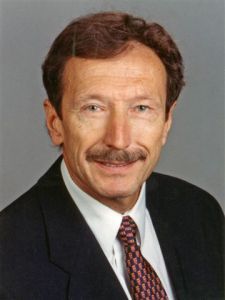

Dr. Rolf Zinkernagel was born in Switzerland in 1944. In 1969, he began working at the Surgery Department at a hospital in Basel, and then applied to the postgraduate course in experimental medicine at the University of Zurich. At the same time, he was studying at the Institute of Anatomy at the University of Basel.
In 1970, he worked at the Department of Biochemistry at the University of Lausanne for two years, and from January 1973 he worked at the Australian National University (ANU, Canberra) to study cellular immunity and immune effector mechanisms in infectious disease models. Being a postgraduate student at the ANU (dissertation was defended in 1975), Dr. Rolf Zinkernagel conducted a study of clinical problems of neuritis of the shoulder plexus, soon his work was published in the journal Nature.
In 1975, Dr. Rolf Zinkernagel moved to the United States and started working at Scripps Medical Clinic, where he continued to study cellular immunity and cellular specificity expression and received important experimental results on the role of the thymus cells that caused significant resonance in the immunological community.
In 1979, Dr. Rolf Zinkernagel began working at the Faculty of Medicine at the University of Zurich, at the invitation of the University’s administration, and made a major contribution to the laboratory equipment, facilities and vivarium for infectious experiments. The main topics of his work were the study of viruses in infected hosts to learn more about the functioning of the immune system and the details of the joint evolution of viruses and the immune system.
In 1995, Dr. Rolf Zinkernagel received Albert Lasker Award for fundamental medical research. Also, the list of his scientific awards includes Ernst Young Prize (1982), Paul Ehrlich and Ludwig Darmstadter Award (1983), Haydner International Prize (1986) and William Wheel Prize (1987).
In 1996, Dr. Rolf Zinkernagel, together with Peter Doherty, was awarded the Nobel Prize in Physiology and Medicine for discovering how the immune system recognizes virus-infected cells. Thus he became the 24-Swiss Nobel Laureate. In 1999, he was also awarded the title of Honorary Member of the Order of Australia (AC), Australian Highest Civil Award, for his scientific work.